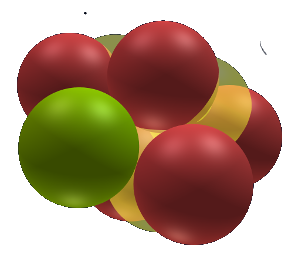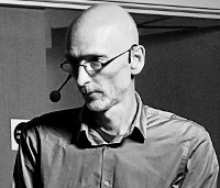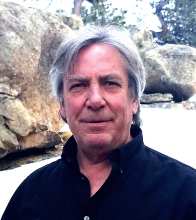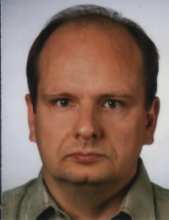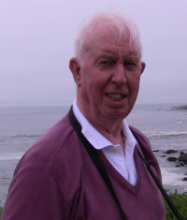The SAM Team
- Edo Kaal has studied analytical and environmental chemistry in the Netherlands. After a career of about 10 years in the IT sector he made the life changing decision to become an independent researcher, going back to his true interest and passion, the study of the natural environment. After several years of finding direction, the "Structured Atom Model" principles and concepts were developed well enough to reach out to the rest of the world with these findings. In 2015 he attended the Electric Universe conference for the first time and made the needed contacts to further develop the model, which led to a session in the breakout room in 2016 and in giving presentations at the EU2017, 2018 and 2019 conferences and in 2018 and 2019 in Italy at the ICMSNS workshops. In 2019 the team was expanded to four and as a result the first book was written with the title "Nature of the Atom - An introduction to the Structured Atom Model". The book has been published by Curtis Press (UK) in September 2021.
-
James Sorensen has always excelled in the Sciences and is lucky to have survived his childhood attempts at making explosives in his basement laboratory. In middle school while on a trip to Los Alamos laboratories, James explained to the parents the difference between Fusion and Fission. In high school he started to question mainstream science - quarks, relativity, black holes, the big bang..... They all seemed like assumptions based on assumptions. He decided computers and programming were more logical so he became a computer programmer.
In 2010 he discovered the Electric Universe and it rekindled James interest in Science -- the world made sense again. Electricity is the force behind much of what we observe in all the sciences -- including nuclear fusion and fission. For the last 4 years James has been working with Edo Kaal on the Structured Atom Model (SAM). He created the computer program which models the SAM theory. SAM has the potential to describe what is happening in SAFIRE and many other LENR experiments. Time will tell....
-
Andreas Otte has a masters degree in computer science. He specializes in designing and implementing applications based on Oracle technologies for a small IT company in Paderborn, Germany. He has a lifelong passion to find and analyse fringe theories. Some of those with good internal logic, acceptable assumptions and high explanatory capability he invested time in. His interest in chronology, catastrophism and the Electric Universe as an example started in 2000 while stumbling upon references to the works of Immanuel Velikovsky. From there it was a small step to discover the works of David Talbott, Wal Thornhill, Herbert Illig, Gunnar Heinsohn and many others. Meeting Michael Steinbacher at the 2011 NPA conference opened up another field of interest as the question of how the theory of the Electric Universe might change our thinking about earth’s geology came into focus. In 2016 at the Electric Universe conference he met Edo Kaal for the first time and wrote a short note about his new model of the atom. While not being able to attend the conference in 2017 in person, he again wrote about Edo's presentation in a German magazine. At the conference in 2018 in Bath he again took notice of SAM and joined the SAM team finally in 2019 after the conference.
-
Jan Emming has a master's degree in electrical engineering from the University of Delft in the Netherlands. At the University of Utrecht in the late '60s, he managed several proposals for projects for the early European Space Organization (ESO) space initiatives in Europe. Among these were the Large Astronomical Satellite (LAS) which was ESO's effort to compete with NASA's Large Space Telescope (LST), and which ultimately developed into the Hubble Space Telescope (HST). As a systems engineer/analyst at Ball Aerospace in Boulder, Colorado he participated in the development of dozens of scientific instruments for the earth and space sciences such as for the High Energy Astronomy Observatories. He worked in the 1980's as manager of technology development for the science instrument department at Ball and was responsible for identifying and developing new technology for X-ray detection and imaging, infrared sensors and systems, cryogenic electronics, and image processing techniques. This led to collaboration between Ball and those institutions that ultimately developed NASA's great observatories: Compton Gamma Ray Observatory, Chandra X-ray Observatory, Spitzer Infrared Telescope as well as the HST for which Ball built many of the focal plane instruments. In retirement he connected with the Electric Universe (EU) concept which holds that electrical forces play a far more important role than gravity in astrophysics, solar and planetary physics, and cosmology. In 2016, he joined the Thunderbolts translation team as a subtitle editor for the series of Space News videos of which some 600 have been produced to date (Thunderbolts.info). These videos address the scientific results and observations of space missions such as mentioned above and almost without exception these results are different from the science models that were used to justify the missions, i.e., they are surprises to one degree or another. For most cases, the EU paradigm has a logical alternative explanation for the surprising observations. After seeing many of these space missions perform marvelously in accomplishing their technical objectives and seeing an inability or unwillingness to adjust the scientific theories, it was impossible not to conclude that current scientific understanding is defective in some fundamental sense. When he saw the concept of the Structured Atom Model at the EU 2016 conference, he realized that this was a paradigm shift as well, but at the atomic scale rather than at the scale of the cosmos.
- Alexander Kerkdijk Needing to know why things work from an early age a natural affinity with history, processes and philosophy shaped his development in education and career. With a background education in IT and urban planning Alexander decided to put his talents at work in IT. Currently providing assistance, advisement and expertise in the transformation of traditional IT departments within organizations to IT driven organizations where IT functions as a service integrator.
An interest in the sciences had always been there of course but with his skillset not complementing a sciences career the interest maintained a ‘standing at the sidelines looking in’ approach to the explanation in how and why things are as they are. Dismayed by the exponentially esoteric and dogmatic approach to mainstream science the exposure to the core tenets of the SAM model provided him an insight in the inner workings of the atom. His involvement with the foundation is to assist in providing a platform from which further exploration of the how and why of our reality are facilitated.
